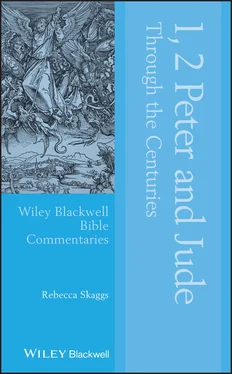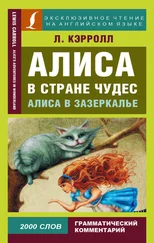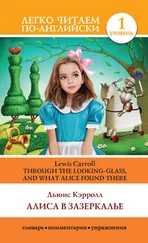In terms of genre, there is little disagreement among early as well as modern scholarship that all three epistles exhibit the typical conventions of the Greek letter tradition and its adaptation by Christian authors (for details see Watson, 2010: 51ff; also Bauckham 1983: 131–133). Although Pseudo‐Euthalius is not the earliest to comment specifically on the genre of 1 Peter as a letter, he is noteworthy on the subject: “Peter himself writes this instructional letter to the Diaspora Jews who had become Christians” (Migne, PG, 85: 680). Eusebius (fourth century) agrees that it is a Diaspora letter addressed to Diaspora Jews but defines these as Christian communities rather than ethnic Jews in Asia Minor and Rome (Michaels, 1988: xxxiv; against this is Elliott, 1990: 81–82).
In addition, current scholars are showing that each text also illustrates special aspects of Greek and Roman rhetorical tradition (see New Eyes series, particularly Webb and Davids [2008] on Jude and Webb and Watson [2010] on 2 Peter). It is also fairly clear that early Christian writers treated these texts as well‐respected epistles even though, especially in the case of 2 Peter, there continued to be serious doubts as to authenticity. This view of them generally remains the position of scholars today although there are differences of opinion on almost every issue (Bray, 2000: xx). However the details of these epistles are treated, it must be noted that they were widely used in early times (ibid.: xxi).
Much has been done in modern critical commentaries on the relation of these little epistles to the larger Pauline corpus so this will not be treated here. It is fairly clear that each of them in their own way provides evidence about the acceptable beliefs that existed in the early time of the church. All of them stress that the Christian faith is not simply theology; that one should live in relation to the very words of Jesus himself. This “practice” can be summarized in three main concepts: self‐sacrifice, generosity, and humility. Although these are primary themes in all of these epistles, they are especially central to the thought of 1 Peter. In fact, for 1 Peter, the humble and patient endurance of suffering (whether the threat of death by the government or verbal abuse by the hostile pagan environment or perhaps both) is the means of following Jesus’ example; humility before God and love of one another should characterize the life of the believer in order to avoid an arrogant and judgmental attitude.
Another key component for all of these texts is the concept that believers exist in a world engaged in spiritual warfare, the cosmic struggle between good and evil. This is not the dualism of Platonism or gnosticism, but is rather an understanding that both evil and good are creations of God and are therefore within his control. Each of the writers treat this topic in some way; 1 Peter includes Christ’s visit to the spirits in prison (3:18–22) where he subordinates all powers; for Jude it is the war between Satan and the Archangel Michael (Jude 9) while 2 Peter along with Jude, discusses the state of the fallen angels (2 Pet. 2:4 & Jude 6). For all of them, however, there is one struggle which will continue until Christ will come again to judge all creatures and creation. This belief in God’s eventual redemption is lived out in the hope and love practiced in the life of individuals as well as the community.
In summary, although risking oversimplification, modern scholarship generally follows the ancient writers in categorizing the Catholic epistles as: (i) probably authentic: 1 Peter and 1 John; (ii) possibly authentic: James, 2, 3 John, and Jude; and (iii) doubtfully authentic: 2 Peter (more details can be found in Appendix 1). For convenience, the authors of both Petrine epistles and Jude will be referred to as “Peter” and “Jude” respectively.
Reception Historical Sources for 1, 2 Peter, and Jude
We are seeking to include a variety of kinds of interpretations through the centuries to highlight the dialogs which led to significant developments. Because of the diversity of topics included in these little texts it seems best not to specify every interpreter here (for descriptions of these, see the Glossary). Rather it is important to show the variety of interpreters when appropriate, while including more detail here on the dominant ones. Since some of the passages have had effects on art, literature, or music, while the influence of others has been more political or social, each chapter will have some unique sources.
The following is a brief overview of the most important sources on all three of these epistles. As mentioned earlier, there are numerous early attestations to each of them, but many of them are in the form of allusions so will only be mentioned whenever relevant; these can be found for 1 and sometimes 2, Peter in the epistle of Barnabas (c.70–79); Clement of Rome (c.95); Hermas (c.140); and Papias (c.130–140). Polycarp (d. 155) actually quotes 1 Peter but does not name him; apparently, he knew and used the epistle but not necessarily as Peter’s. Irenaeus (b. 130) is the first to particularly quote 1 Peter by name. Evidently the heretic Marcion did not accept 1 Peter. (For more details on all of these, see Bigg, 1975.) For Jude, there are five primary early sources which have full commentaries or a major complete work on the epistle (Jones, 2001): Clement of Alexandria (second century), Didymus (mid‐fourth century), several catenae (one probably compiled by Andreas, seventh century, and one by Severus, late fourth to early fifth century), Oecumenius (sixth century), and Bede (eighth century). Once in a while, Hilary of Arles, Augustine, Cyril of Alexandria, or others will comment.
No one in the medieval era wrote a complete commentary on any of these three epistles unless you locate Theophylact of Ohrid (1050–1108) in this period. (He wrote commentaries on the whole New Testament and some of the Old but is often considered within the earlier period.) Our three epistles are referred to numerous times, however, in debates and controversies on major theological issues throughout this time. In fact, scholars such as Erasmus, Grotius, Ockham, Dun Scotus, Karlstadt, and St. Francis de Sales occasionally include 1 and 2 Peter in their arguments. St. Thomas Aquinas also cites 1 Peter and sometimes 2 Peter in his explanations on the nature and foreknowledge of God and other pertinent topics. He does not cite Jude. Aquinas is an indication that both Peters are intrinsically involved in the theological discussions and controversies as theology developed. Although Jude is clearly not as involved in the discussions and councils, the epistle is taken seriously by many of the denominations as they constructed their confessions, creeds, and church constitutions – these are noted throughout the commentary.
Luther and Calvin represent the time of the Reformation, along with Arminius, Melanchthon, and others who are included as appropriate. Bengel, Matthew Poole, Thomas Watson, and John Wesley reflect the following era. Brief explanations of the main writers follow to provide a sense of dating as well as significance. Descriptions of others who are used less regularly are included in the Glossary.
Significant Ancient Interpreters
Clement of Alexandria(c.150–215) is the earliest commentator to write a full although fragmentary commentary on 1 Peter. Probably born in Athens, he was an early Greek theologian and leader of the catechetical school of Alexandria, one of the earliest centers for Christianity. Although the entire original text no longer exists, ample comments do exist throughout the entire epistle. His work is the oldest existing commentary on Jude but it consists of sketched outlines and thoughts possibly intended to be elaborated upon by later writers. These are gathered into the appropriately named “Hypotyposes” (Jones, 2001: 2). He also comments on the other Catholic epistles but he did not accept 2 Peter as authentic. According to Bray (2000: xxvi) this stance was customary at this time.
Читать дальше












